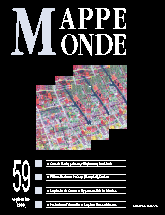
Christian Hélion. Peïra-Cava: history of a mid-altitude tourist site near Nice. (4 fig.)
At the end of the 19th century, Peïra-Cava, a flat that had been opened by the border army in the mid-altitude mountains near the Côte dAzur, was transformed into a major tourist site because of its accessibility and proximity to Nice. The long and complex history of this place, which is now practically abandoned, and the myth of the golden age surrounding it obscure the reality of the territorial dynamics at work : Peïra-Cava, an annex of Nice, a winter town, is now part of its leisure area.
keywords: CÔTE DAZUR, LEISURE, MOUNTAINS, NICE, PLACE HISTORY, TERRITORIAL DYNAMICS, TOURISM
Mireille Bruston, Philippe Duhamel. Grand old hotels, records of the history of tourism. The Splendid and the Royal hotel in Saint-Gervais-les-Bains (Haute-Savoie) (5 fig.)
Buildings offer an operational insight into the way territories are structured and redesigned. In a spatial approach to tourism, grand old hotels reveal a great deal about the establishment and construction of tourist resorts. The apparent unity of a building often conceals a long and complex history, which is worth deciphering.
keywords: DEVELOPMENT OF TOURISM, FRANCE, GRAND OLD HOTELS, SAINT-GERVAIS-LES-BAINS, TOURIST BUILDING, TOURIST RESORT
Jean-Christophe Gay. Two cases of enclave tourism: the island-hotel and the free zone (8 fig.)
The Seychelles and the Maldives offer numerous examples of island-hotels. Their location in the Maldives is determined by the proximity of the international airport and the capital, the centre of economic and political power, which has largely influenced the development of tourism. The operation of the hotel enclave in Comoros highlights the countrys problems.
keywords: COMOROS, FREE ZONE, INDIAN OCEAN, ISLAND-HOTEL, MALDIVES, SEYCHELLES, TOURISM
The recent pulsations of the Casset glacier in Pelvoux (4 fig.)
The variations of the front of the Casset glacier (Northern edge of the Parc des Écrins in the French Alps) show that it reacts extremely rapidly to the fluctuations recorded over the past 150 years.
keywords: ALPS, DIACHRONIC ANALYSIS, GLACIER, RECENT FLUCTUATIONS
Joël Ninon. Urban growth and retail trade on Reunion Island (5 fig.)
From the beginning of the eighties, the dissemination of the urban growth results in Réunion Island by a peri-urbanization phenomenon, modifying more and more the rural areas. In some periurban districts, the establishment of commercial centres accompanies the process. These structures often become centres of expansion which serve as basis for creation or consolidation of commercial activities areas.
keywords: COMMERCIAL CENTRE, PERIPHERY, PERIURBANIZATION, REUNION ISLAND, URBANIZATION
Urbanisation and consumption of space in China: Suzhou (9 fig.)
The urban development of the Changjiang River Delta has led to a major transformation of land use. Remote sensing offers a way of analysing precisely the development of industrial and residential areas and the consumption of cropland.
keywords: EASTERN CHINA, LAND USE, REMOTE SENSING, URBANISATION
Gabriel Weissberg. Pudong New Area (Shanghai) (3 fig.)
At the cost of major infrastructure investment, Chinas central government and local authorities hope to make Pudong New Area (PNA), established in 1990, a key element in the expansion of Shanghai. Housing, services and industries are laid out across nine activity areas. However, certain weak points in the development of PNA raise questions about its role in the expected revitalisation of Shanghai.
keywords: CHINA, FREE ZONE, INDUSTRY, OPENNESS, PUDONG, SHANGHAI
Brian Hooker. Did Claudius Ptolemy know about Australia? (1 fig.)
The paper freshly examines the question of whether Australia was known to ancient peoples in the Mediterranean area. Claudius Ptolemys printed world map of 1482 is reviewed and the paper also looks at the evidence of multiple sea and land routes that linked Australia indirectly to the Mediterranean region in ancient times.
keywords: AUSTRALIA, CLAUDIUS PTOLEMY, DISCOVERY, GEOGRAPHIA, REPANGERS
Laurent Grison. Figures within figures and orbialisation: the Piazza Navona in Rome (3 fig.)
A study of the arrangement of a Roman square leads us to associate town-planning and the vision of the world in the baroque period. The perception of space in the Piazza Navona, centred on Berninis Fontana dei Quattro Fiumi, makes this square the ideal type of a theatrical centre of the world. By highlighting the processes of figures within figures and three interlocking scales, we propose the explanatory principle of orbialisation.
keywords: CITY CENTRE, FIGURES WITHIN FIGURES, IDEAL TYPE, ORBIALISATION, PIAZZA NAVONA, ROME, TRANS-SCALAR AGGREGATION
Guérino Sillère. An Interactive Atlas of Switzerland (2 fig..)
Book reviews (Pierre Usselmann)
Mappemonde 2/00![]()
![]() Mappemonde 4/00
Mappemonde 4/00
For subscribe or buy this issue: BELIN
Last modified: October 20, 2000